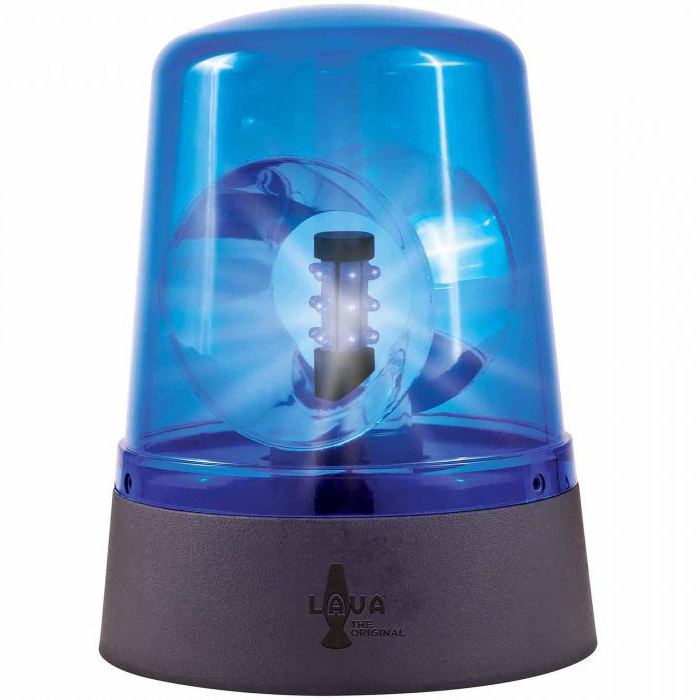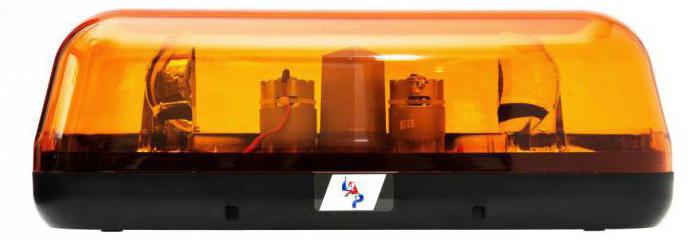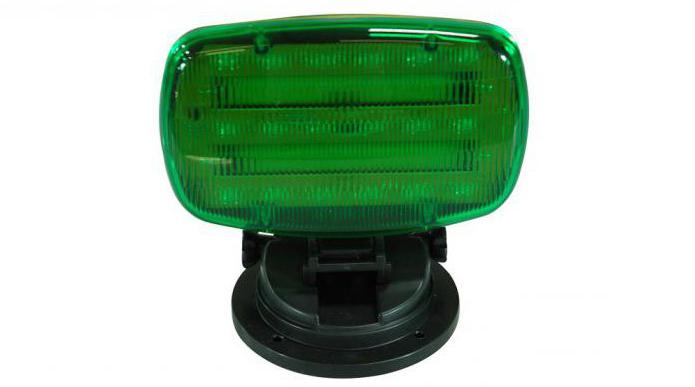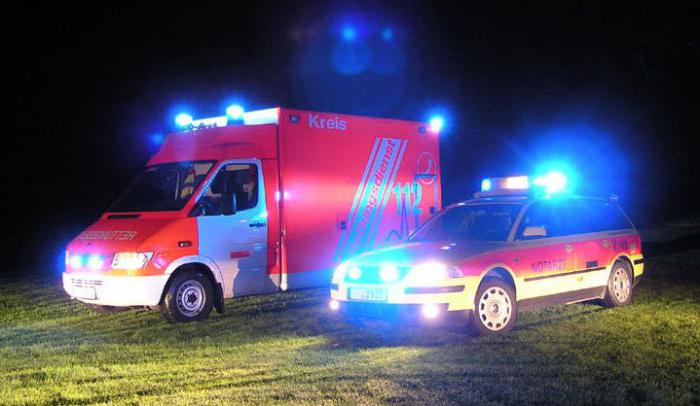Flashing beacons, known to most people as “flashing lights”, are a kind of warning lights installed on vehicles of special services. The main purpose of using these devices is to warn road users about the approach of a vehicle, indicate its priority and light alert.

The basis of the work of flashing beacons is not only the transmission of a light signal, but also informing by a certain color. On Russian roads, the use of these devices is strictly regulated, and a specific value is assigned to each individual shade. In addition, the color of the beacons can be used to determine whether a transport belongs to a particular service.
Varieties
Flashing beacons are divided into several types depending on the color of the signal, design and method of attachment to the vehicle. According to the rules of operation, such devices are installed only on the outer surfaces of cars.
Blue flashing light
It is the most common color for these lighting fixtures. It can be used both singly and in combination with other shades, often with white and red. The blue flashing light is mainly used by emergency services.

In addition to being placed directly on the roof of the car, it can be placed under the grille.
Red flashing light
It is considered the base color. Together with a blue tint it is often used as an identification mark for such special services as the FSB and the traffic police.
Orange flashing light
They are installed both in conjunction with other shades, and separately. As a standard, they are considered to be the identification marks of large-capacity vehicles, public utilities transporting garbage or transporting building materials.

The yellow flashing light is used less frequently than the orange.
Green and White Moon
Such beacons are considered additional devices. The white-lunar color is used mainly by collector cars and is used as a warning in the event of a robbery or attack on vehicles during transportation of cash or any other expensive cargo.

Green color, unlike all of the above, is practically not used today. Previously, such beacons were attached to cars that accompanied important persons. Vehicles with such identification marks closed the guard column. Now they are not mandatory and can be used as additional lights.
Mounting classification
Flashing beacons, as mentioned above, are attached only to the outer surfaces of the vehicle. Depending on the installation option, the lights are divided into several main types:
- Stationary beacons. They are mounted on the roof of the car with the help of special fasteners that require the creation of holes in the body. Provide the most reliable connection to the surface of the vehicle.
- Quick-detachable, or with magnetic fastening. They are fixed with powerful magnets. They have certain advantages: they can be quickly removed or changed their location.
- Flashing beacons with universal fixation. They mean the possibility of both magnetic and stationary mounting to the car.
Classification of flashing beacons depending on the design
The structure of such devices usually takes into account all the features of operation. This is explained by the fact that while traveling at high speed, beacons can be subjected to various influences. For this reason, device shades are made of high-strength polycarbonate, which is shock resistant. In addition, often beacons are made of a material that is immune to ultraviolet rays, which significantly extends their life.
Light sources of flashing beacons:
- Incandescent lamps. The oldest light sources for such devices. They are characterized by minimal power and high energy consumption. Extremely unreliable. To date, rarely used.
- Halogen lamps. The cheapest and most common option. In terms of reliability and brightness, they represent the golden mean. Similar to lamps installed in headlights of vehicles.
- Discharge lamps. A vivid example is xenon bulbs. Beacons of this type are notable for their good reliability and brightness, but at the same time their cost is much higher than the previous two options.
- LEDs They are characterized by minimal power consumption at maximum brightness. The LED flashing beacon has virtually no effect on the on-board network of the car. It is characterized by increased reliability and a long service life. The cost is not more expensive than gas-discharge analogues, but the minimum guarantee for them issued by the manufacturer is 5 years.
Benefits of Using Flashing Beacons
The use of lights on specialized vehicles provides several advantages. The main one is relative freedom of movement: if the car has flashing lights on, the driver can ignore some traffic rules, including road markings traffic signals, to install in the wrong places, provided that this does not lead to an emergency. However, it is worth considering the fact that these identification lights do not give any advantage over the signs of the traffic controller.
Flashing beacons greatly facilitate traffic on high-traffic routes: the blue light on, together with an audible signal, obliges the remaining traffic participants to clear the road and give way to a special-purpose vehicle if possible. If the red beacon also turns on, then the drivers must give way to the lane and all accompanying vehicles.
Clearing the road, as a rule, implies that the rest of the participants in the movement should not take any action that could prevent a special vehicle from reaching its destination.

Orange flashing beacons in most cases are used as a warning signal and a means for highlighting a car. A fire of this color does not oblige other drivers to give way, but the owner of a special vehicle, by virtue of certain powers, has the right to ignore some rules of the road: stop at the wrong place or ignore the markings.
When you need to give way to special vehicles
It is worth noting that if the driver did not miss the car with blue flashing lights, he is not always wrong. It is imperative to give way to rescue vehicles, ambulances and firefighters, even if they do not have light and sound alerts. In the event of a violation of this rule, a fine of several hundred rubles or a deprivation of a driver’s license for a period of 3 months is threatened.

Transport owned by public servants has priority only if flashing beacons and a siren are on it.
Controversial situations
The rules of the road and the legislation do not specify the time during which it is necessary to give way to a special vehicle. This causes not the most pleasant consequences for drivers when they are required to respond immediately, which is simply not possible. Otherwise, fines are issued.
Another pitfall is the behavior of other drivers. Many try to stop or to rebuild, which leads to the creation of obstacles for other road users, being a serious violation of traffic rules.
According to theory, the driver should skip a special vehicle with flashing beacons in such a way as to prevent the creation of new problems on the road. In fact, rebuilding in this case is prohibited, but in practice this rule is practically ignored by everyone.
Sanctions against drivers
If the driver does not give way to a special vehicle with flashing beacons, he faces a deprivation of rights for up to three months or a fine of 500 rubles. Not giving way to a public servant will be cheaper than 200-300 rubles. At the same time, no one has the right to select documents from someone who has violated the rule.
The specific punishment of the driver for not missing the motorcade depends on the situation and circumstances. As a rule, several factors are taken into account at once: whether flashing beacons are on, whether the person asking to give way has the right to do so. If the transport with special signals does not have priority, then the movement is carried out in the same order.
